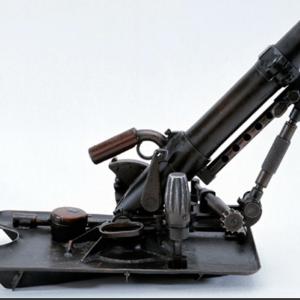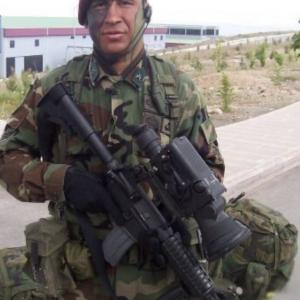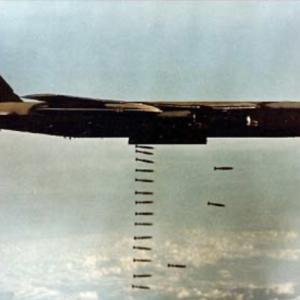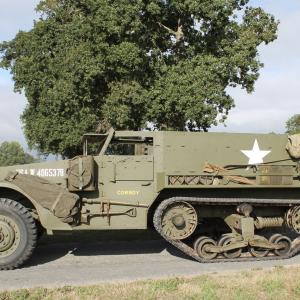
M2 Flamethrower
The M2 flamethrower was a man-portable, backpack-type flamethrower used extensively by the United States military during the mid-20th century. Its development and deployment represented a significant evolution in infantry assault weaponry, designed specifically for clearing fortified positions such as bunkers, pillboxes, and caves. The M2's origin lies in the technological and tactical needs of the U.S. military during World War II, when soldiers faced formidable Japanese fortifications in the Pacific Theater.
The initial design work on the M2 began in the early 1940s under the direction of the United States Army Chemical Warfare Service, which was responsible for the development of chemical and incendiary weapons. Prior to the M2, earlier models like the M1 and M1A1 flamethrowers were used but were less efficient, less reliable, and more cumbersome. The M2 was designed to improve upon these flaws. Engineers working at various military arsenals, notably at Edgewood Arsenal in Maryland, collaborated on refining the weapon's specifications. The weapon featured a twin-tank fuel system containing a thickened gasoline mixture (napalm in later versions) and a compressed gas propellant, often nitrogen. Its improved ignition system, range, and fuel efficiency made it more effective in combat situations.
Manufacturing of the M2 was handled by a number of companies, but primary production was led by firms such as the E. C. Brown Company and Beattie Manufacturing Company under contract with the U.S. military. Later production included input from other defense contractors as the demand for the weapon increased during wartime. The M2 was produced in several variants including the M2A1 and M2A1-7, which saw improvements in fuel delivery systems, ignition reliability, and overall ergonomics. These models became progressively lighter and easier to carry while also increasing their range and fuel capacity. The exact number of units produced during the war is not definitively known, but it is estimated to be in the tens of thousands, given the widespread need for the weapon in various theaters.
The M2 flamethrower saw its first major combat use during World War II, particularly in the Pacific Theater where American troops faced entrenched Japanese defenders who made extensive use of bunkers, caves, and tunnel systems. It proved particularly effective in battles such as Iwo Jima, Okinawa, and Peleliu. At Iwo Jima, for instance, the Japanese defense strategy relied heavily on fortified underground positions that were impervious to conventional small arms and artillery. American flamethrower operators were instrumental in rooting out these hidden defenders by projecting jets of fire into bunker openings, thereby clearing paths for advancing infantry units. In many such engagements, the use of flamethrowers turned the tide of battle by neutralizing strongholds that otherwise would have inflicted heavy casualties.
The use of the M2 was not limited to World War II. It was also used during the Korean War and, to a somewhat lesser extent, the Vietnam War. In Korea, it served similar roles in bunker-clearing operations, especially during the early phases of the conflict when trench warfare and static defensive positions were more common. In Vietnam, although the nature of guerrilla warfare made the flamethrower less prominent than in previous conflicts, the M2 was still used in certain operations to clear dense foliage, destroy Viet Cong tunnel complexes, and eliminate fortified enemy positions. By the late 1960s, however, the weapon's utility was diminishing due to changes in combat doctrine, the development of alternative weapon systems, and rising ethical concerns over its destructive power.
While it is difficult to attribute the outcome of entire battles solely to the use of flamethrowers, their contribution in several engagements was undeniably decisive. During the Battle of Okinawa, U.S. forces encountered intricate networks of caves and fortifications across the island. Flamethrowers were used extensively to flush out defenders and deny them the use of key positions. In one notable instance, elements of the 1st Marine Division employed M2 flamethrowers alongside demolition charges to systematically destroy the Japanese defensive network at Shuri Line, which played a critical role in the eventual American victory. Similarly, in Peleliu, where Japanese troops had fortified a coral mountain known as "Bloody Nose Ridge," flamethrower teams operated in perilous conditions to eliminate defenders, inch by inch, in one of the bloodiest battles in the Pacific.
The legacy of the M2 flamethrower is complex. On one hand, it was a terrifying and effective weapon that saved the lives of many Allied soldiers by reducing the need for direct assaults on well-defended enemy positions. On the other hand, its use raised significant moral questions, particularly due to the horrific injuries it inflicted and its psychological impact on both operators and enemy troops. Post-Vietnam, the United States gradually phased out flamethrowers from frontline service, citing not only their limited tactical value in modern warfare but also concerns over international humanitarian law and public perception. By the 1980s, the U.S. military had officially removed flamethrowers from its standard arsenal, replacing them with thermobaric weapons and other more targeted means of bunker destruction.
Despite being retired from active service, the M2 flamethrower remains an iconic weapon of 20th-century warfare. It is preserved in museums and military collections, and it often appears in films and documentaries about World War II and the Korean War.










